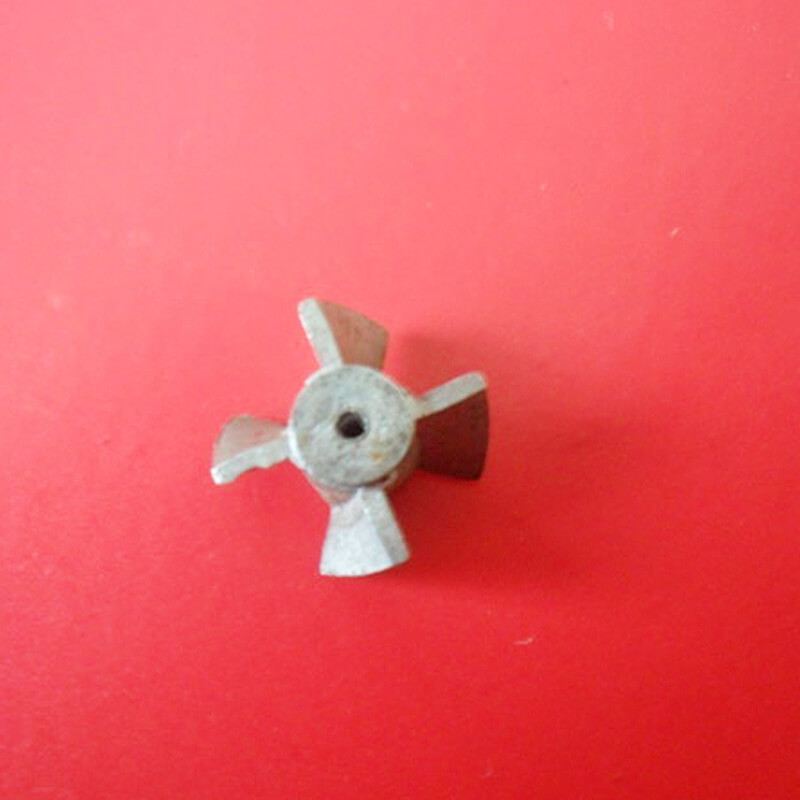As an indispensable part of the powder metallurgy process, powder metallurgy press molding plays a very important role in the later production of powder metallurgy parts. Therefore, we must pay special attention to this step of powder metallurgy pressing. Let's learn about the existing manufacturing methods of China Powder Metal Parts.
1. Powder pressing (or cold pressing):
No pressure forming:
This is used for porous parts. The powder is poured or vibrated into the mold and then heated to the sintering temperature. (Loosely sintered). Then remove the part from the mold.
The press used for compaction can be mechanically operated or hydraulically operated. It can be understood that the powder does not behave like a liquid under pressure, that is, the pressure is not evenly distributed. This is because of the friction between the particles themselves and between the particles and the tool. For this reason, two punches are usually used to compact the metal powder in the mold.
This leads to a stronger and denser part. The punches are located at the two ends of the mold and usually operate independently of each other. In an automatic press, each stroke of the machine generates one or more pressures, which are used for small parts that require low pressure.
During the compaction process, the voids between the particles are reduced. Particles will also deform due to pressure, and they will lock into each other. The surface irregularities of the particles are flattened. The pressure used is high enough to produce powder cold welding.
Cold welding gives green strength and fixes the parts together for easy handling. The density has also increased. Soft and ductile metal powders are easily deformed; therefore, for tin, a pressure of 0.75 kg/mm² is sufficient; for tungsten and refractory materials, a pressure of 80 to 160 kg/mm² may be required.
For any particular metal or alloy, there is usually a Z-best pressure, which can produce Z-best results at a given energy consumption. Beyond this value of z, a further increase in pressure will not increase the density, tensile strength and other properties accordingly. During the compaction process, the applied pressure should be uniform and applied simultaneously from above and below.
The speed at which the pressure is applied is also very important, because too fast speed may cause some air to stay and cause certain defects. Sometimes waxes and soaps are used to lubricate powders and produce a more even pressure distribution. These especially help reduce the friction of the mold wall. However, since cold welding is suppressed, the green strength decreases.
The compact obtained by the above method is not strong and dense. To improve these properties, parts should be sintered. The strength of the unsintered part is called the original strength.
Hot pressing:
It is impossible to cold press very hard powders (such as diamonds) satisfactorily. Use hot pressing higher than the metal recrystallization temperature to eliminate work hardening and produce accurately shaped high-density parts. It is important to perform hot pressing in a vacuum or a neutral or reducing atmosphere, otherwise the metal may be oxidized.
It is important to choose the mold material to suit the temperature encountered. Metal molds can be used below 1000°C, graphite molds can be used above 1000°C. The advantages of graphite are that it is cheap, easy to process, resistant to thermal shock, and provides its own reducing atmosphere. The powder can also be thermoformed by rolling, forging or extrusion.

2. Sintering:
In a controlled atmosphere, the powder compact is heated in a furnace to below the melting point of at least one main component, which is called sintering. In the sintering furnace, the parts are gradually heated and immersed at the required temperature, which depends on the type of material.
In this cycle of heating operation, the powder binds itself into a whole. The sintering temperature and time vary with the compressive load used, the type of powder, and the strength requirements of the finished part.
A few examples are:
Sintering results in the strengthening of the fragile green body produced by the pressing operation. In addition to reinforcing parts, sintering also increases conductivity, density, and ductility. Since shrinkage increases with increasing sintering temperature, the selected sintering temperature is a compromise between strength and dimensional stability. Select the Z high temperature that provides acceptable small dimensional changes.
When a mixture of different powders is to be sintered after pressing, and the individual powder metallurgy in the compact has a significantly different melting point, the sintering temperature used is higher than the melting point of one of the component powders. Metals with low melting points become liquids.
When the solid phase of the powder is soluble in the liquid metal, the solid metal may diffuse significantly through the liquid phase, which will form a good bond between the particles and result in high density.
Most cold-pressed powder metallurgy products shrink during the sintering process. Generally, factors that affect shrinkage include particle size, pressure used, sintering temperature and time. By carefully selecting the metal powder and determining the pressure, sintering temperature and time, the amount of shrinkage can be controlled. The amount of shrinkage or volume change should be determined to allow for this change in the mold design used in the process of manufacturing a given shape.
Until the active high temperature sintering is completed, the full strength associated with high bonding can be obtained. Assuming that a compact is manufactured in a system that has not been evaluated at room temperature, the initial increase in adhesion between powder particles will occur at about 150°C when heated, but refractory metals (tungsten, molybdenum, Tantalum, etc.) are excluded. At the same time, the porosity of the component will have a measurable increase.
They are:
a. Grain growth across the boundary between the original grains.
b. Pores tend to shrink.
c. Sphericalization of angular powder particles.
d. The trapped oxide is easy to spheroidize.
Although applying pressure during the heating process is not necessary for the sintering operation, the density of the sintered product can be increased by hot pressing. The protective atmosphere is essential for the successful sintering of the compact.
The purpose of this atmosphere is to protect the pressed compact from oxidation, which prevents the metal powder particles from successfully welding together. For the reduction of oxides, hydrogen is generally used. Before the hydrogen enters the furnace, the water vapor in the hydrogen should be removed through an activated alumina dryer.
Sintering can be carried out in gas-fired, oil-fired or electrically heated furnaces. These furnaces can be batch or continuous.
Sometimes the sintered product is further processed to obtain better performance, as shown below:
a. Penetration:
The porosity of the sintered product can be improved by the infiltration process. During the infiltration process, the pores are filled with lower melting point metals through capillary action. For example, copper is used as a penetrating agent to pass the penetrating agent placed on the top of the compact. Strengthen steel.
b. Sizing and embossing:
Cold working improves the precision and mechanical properties of sintered products. As its density increases significantly, sizing produces better dimensional accuracy. On the other hand, imprinting significantly increases the density, while also improving the mechanical properties, surface finish and dimensional accuracy.
c. Processing:
When high precision is required, sometimes sintered parts are completed by conventional machining.
d. Heat treatment:
Sintered parts made of powder heat-treatable alloys or sintered parts made of metal mixtures that react to heat treatment can be heat treated to improve various properties.

 English
English 简体中文
简体中文






